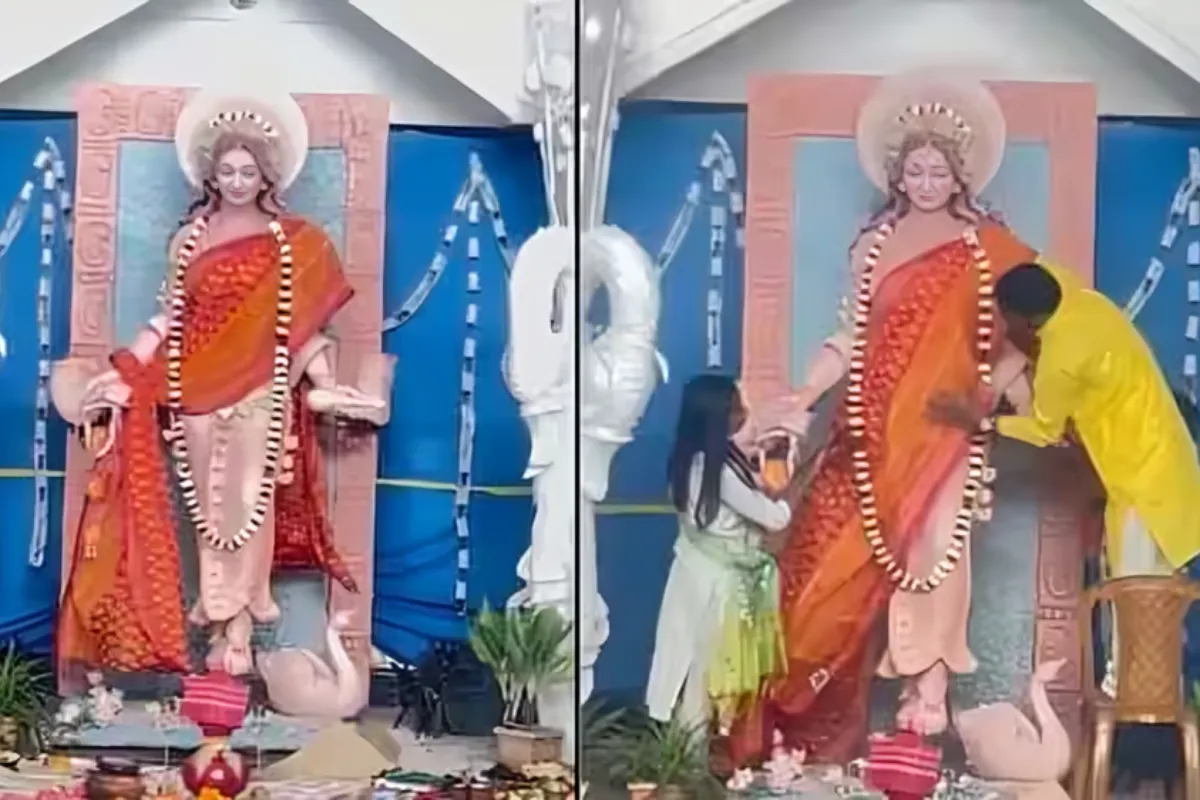A recent Saraswati Puja celebration at a government college in Tripura took an unexpected turn when a video of the idol went viral. Depicted without the traditional saree, the portrayal sparked protests from Hindu groups who deemed it “vulgar” and disrespectful. This incident highlights the complex interplay between artistic freedom, religious interpretations, and cultural sensitivities in India.
Protests Erupt Over Saraswati Idol Without Saree
The video, filmed at the Government College of Art and Craft in Lichubagan, showed a Saraswati idol crafted by students, deviating from the usual portrayal draped in a saree. This unconventional depiction drew criticism from members of the Vishwa Hindu Parishad (VHP) and Bajrang Dal, who stormed the college and demanded the idol be covered.
Arguments for and Against
Protesters, led by Dibakar Acharjee of ABVP, argued that the idol’s appearance violated traditional norms and disrespected the goddess. They emphasized the importance of adhering to established iconography in religious depictions.
However, college authorities defended the students artistic expression, emphasizing that the idol adhered to traditional sculpture forms seen in Hindu temples and wasn’t meant to cause offense.
Resolution and Ongoing Debate
Faced with the protests, the college authorities ultimately replaced the idol and covered it with a veil. While no official complaint was lodged, the incident has ignited a debate on the balance between artistic freedom and religious sensitivities.
Crucial Questions Raised
This controversy raises crucial questions about artistic expression within religious contexts. How much creative liberty should artists have when depicting deities? Should religious interpretations dictate artistic choices? How can we foster dialogue and understanding between diverse perspectives?
Keep watching our YouTube Channel ‘DNP INDIA’. Also, please subscribe and follow us on FACEBOOK, INSTAGRAM, and TWITTER












